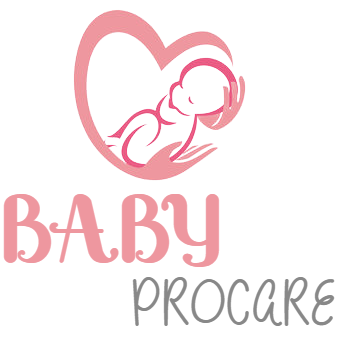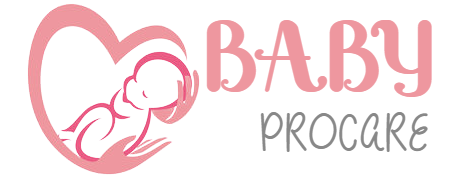Baby’s Development
Each week brings incredible progress for your baby as they prepare to meet you.
Week 33: Baby is Perfecting Their Systems
- Size: Your baby is approximately 17.2 inches long and weighs around 4.2 pounds, about the size of a pineapple.
- Lungs: While nearly developed, the lungs are still working on producing surfactant, a vital substance that helps them function correctly after birth.
- Movements: You’ll notice shifts in movement patterns. The baby might kick less frequently but with greater force as they have less room to stretch.
- Immune Boost: Your baby is absorbing antibodies from you, strengthening their immune system for the outside world.
Week 34: Fat and Brain Development in Full Swing
- Size: The baby is now about 17.7 inches long and weighs 4.7 pounds—roughly the size of a cantaloupe.
- Skin Changes: Fat layers are developing under the skin, helping regulate body temperature post-birth.
- Brain Power: Rapid brain growth is occurring, which means your little one is becoming more aware of their surroundings.
- Head-Down Position: Most babies begin settling into the head-down position, which is ideal for delivery.
Week 35: Almost Ready for the Big Day
- Size: By this week, the baby is about 18 inches long and weighs around 5.3 pounds, the size of a honeydew melon.
- Hearing: Fully developed, your baby can hear and recognize voices, especially yours and your partner’s.
- Sleep Cycles: REM sleep is now present, suggesting your baby might even be dreaming!
- Amniotic Fluid Decrease: As your baby grows, there’s less room for amniotic fluid, making movements feel sharper and more pronounced.
Changes in Your Body During Weeks 33-35 of Pregnancy
As your baby grows, your body undergoes several adjustments to accommodate them and prepare for birth.
1. Shortness of Breath
Your expanding uterus presses against your diaphragm, making it harder to breathe deeply. Sleeping propped up with pillows or practicing good posture can help alleviate discomfort.
2. Braxton Hicks Contractions
These “practice” contractions become more noticeable. They’re typically irregular and painless, helping your uterus prepare for labor. If they become regular or painful, contact your doctor.
3. Pelvic Pressure and Back Pain
The baby’s movement into the pelvis, known as lightening, can cause added pressure in your pelvic region. This may also lead to lower back pain. A maternity belt or warm compress can provide relief.
4. Swelling (Edema)
Mild swelling in your feet, ankles, and hands is common due to fluid retention. Elevate your feet, wear compression socks, and drink plenty of water to reduce swelling. However, sudden or severe swelling may indicate preeclampsia and requires immediate medical attention.
5. Fatigue
Carrying extra weight and disrupted sleep can leave you exhausted. Prioritize rest and consider short naps during the day to stay energized.
Common Symptoms and How to Manage Them
Here’s a detailed look at the common symptoms during this phase and practical tips to handle them:
Heartburn and Digestive Issues
Your growing uterus pushes against your stomach, leading to acid reflux and heartburn. To manage this:
- Eat smaller, more frequent meals.
- Avoid spicy and acidic foods.
- Stay upright for at least an hour after eating.
Leaking Colostrum
You might notice a yellowish fluid leaking from your breasts. This is colostrum, the first milk your baby will drink. Use nursing pads to manage leaks and protect your clothing.
Sleep Problems
Insomnia and discomfort may make restful sleep challenging. Tips for better sleep:
- Use a pregnancy pillow for support.
- Sleep on your left side to improve blood flow.
- Establish a relaxing bedtime routine, such as a warm bath or gentle stretches.
Frequent Urination
Your baby’s position puts pressure on your bladder, causing frequent trips to the bathroom. Stay hydrated but limit fluid intake an hour or two before bedtime.
Preparing for Labor and Delivery
Weeks 33-35 are the perfect time to finalize your preparations for the baby’s arrival.
1. Pack Your Hospital Bag
Having a ready-to-go bag will give you peace of mind. Include:
- For You: Comfortable clothing, toiletries, a robe, and slippers.
- For Baby: Onesies, socks, a blanket, diapers, and a car seat.
- Extras: Phone charger, snacks, and important documents (insurance card, ID, and birth plan).
2. Take a Prenatal Class
If you haven’t already, sign up for a childbirth or breastfeeding class. These can provide valuable insights and boost your confidence.
3. Know the Signs of Labor
Familiarize yourself with the difference between Braxton Hicks contractions and true labor. Watch for:
- Regular, painful contractions that don’t ease with rest.
- Water breaking or fluid leakage.
- Bloody show (a sign the cervix is dilating).
4. Finalize Your Birth Plan
Discuss your preferences with your healthcare provider, including pain management options, delivery methods, and who you want in the room with you.
5. Babyproof Your Home
Prepare your living space for your little one by setting up a crib, washing baby clothes, and stocking up on diapers and wipes.
Key Concerns to Watch Out For
Although many symptoms are normal, certain issues warrant immediate medical attention:
- Decreased Fetal Movement: If your baby is moving less than usual, perform a kick count. Contact your doctor if you notice fewer than 10 movements in two hours.
- Sudden or Severe Swelling: Particularly in the face or hands, this could signal preeclampsia.
- Severe Headaches or Vision Changes: These could also indicate preeclampsia or high blood pressure.
- Signs of Preterm Labor: Regular contractions, lower back pain, or vaginal bleeding before 37 weeks should be evaluated immediately.
Tips for Staying Comfortable
Stay Active
Light exercises like walking or swimming can relieve back pain and improve circulation. Always consult your doctor before starting a new activity.
Eat a Balanced Diet
Prioritize nutrient-rich foods to support your baby’s development and maintain your energy levels. Foods rich in protein, calcium, iron, and fiber are particularly important.
Hydrate
Aim for at least 8-10 glasses of water daily to reduce swelling, prevent constipation, and maintain amniotic fluid levels.
Practice Relaxation Techniques
Deep breathing, prenatal yoga, and meditation can help manage stress and prepare you mentally for labor.
What’s Next? Looking Ahead
As you approach week 36, you’ll be just one week shy of full-term pregnancy. These final weeks are about staying prepared and monitoring your body for any signs of labor. Remember to keep communication open with your healthcare provider and trust your instincts if something feels off.
Pro Tip: Take time to savor this experience, even with its challenges. Journaling or capturing moments through photos can help you preserve memories of this transformative time.
Weeks 33-35 of pregnancy are all about growth—both for your baby and your readiness to welcome them into the world. By understanding what’s happening with your body and baby, managing symptoms effectively, and preparing for labor, you can feel confident and excited about the upcoming milestone.
Do you have specific questions or concerns about this stage of pregnancy? Let’s chat about how to make these final weeks as smooth as possible!


